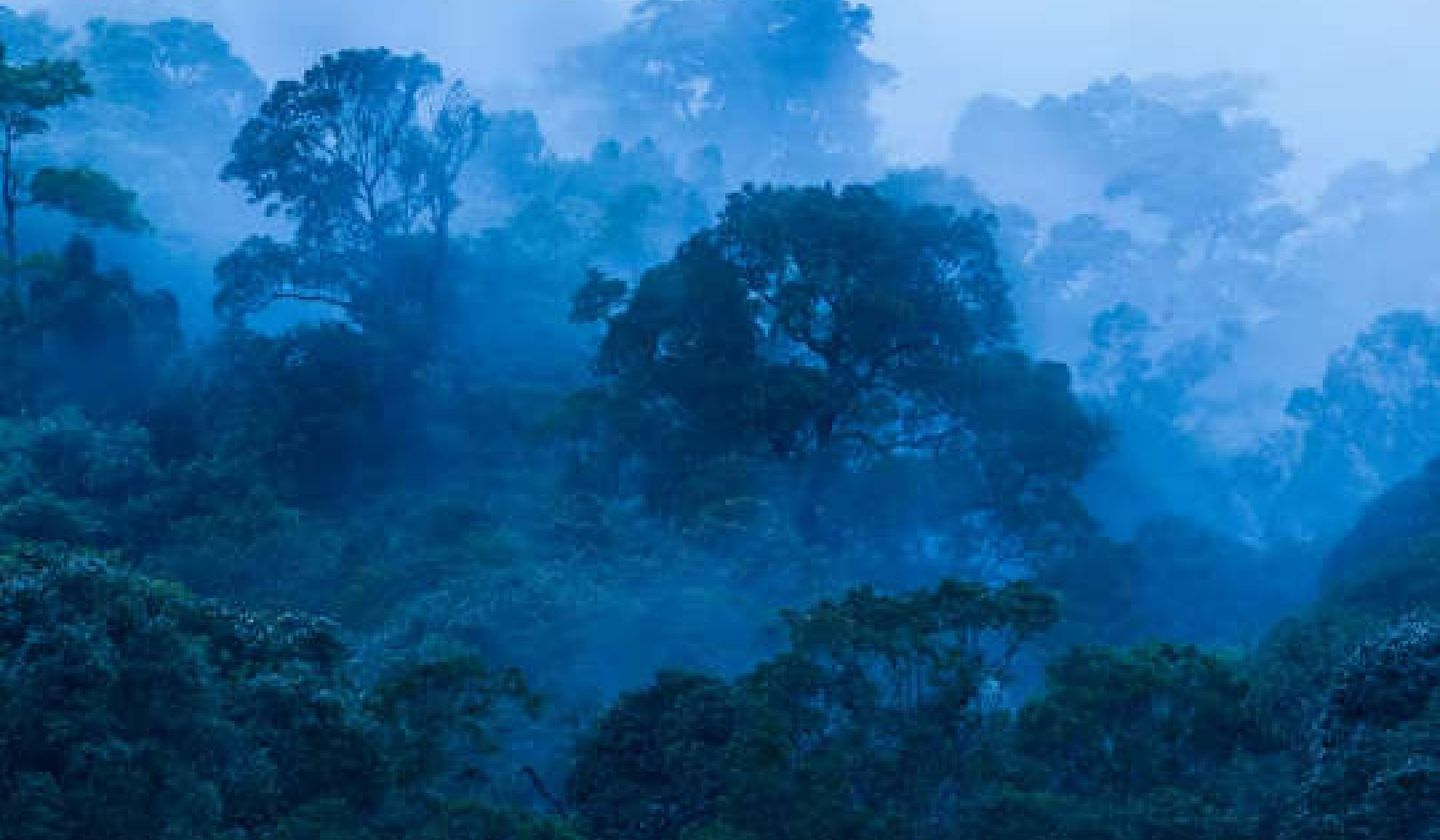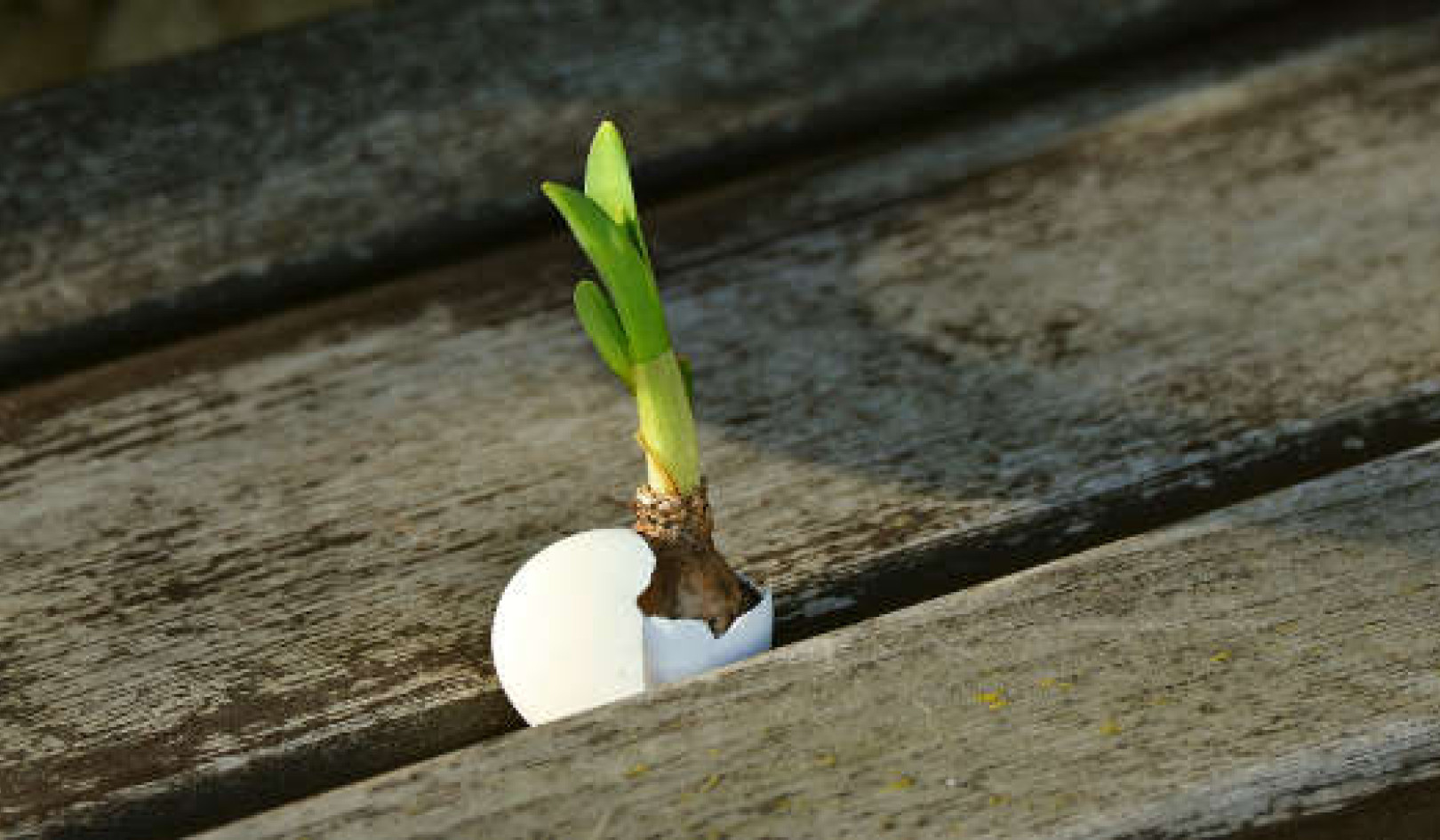
Image by Comfreak
Just before the fall equinox of 1995, I found Thomas Berry’s book, The Dream of the Earth. His visionary environmental thinking ignited a profound longing to reconnect with life on Earth in ways that felt both new and remembered.
In the first weeks of reading Berry’s book, I found myself sitting in my yard, feeling every filament in my body with acute awareness. My entire nervous system seemed to connect through bands of light to the bands of energy emanating from the Earth. I felt acutely connected, as if I had finally come home. A line from a poem that I wrote that same week captures my experience:
I touch hand to dirt and grass, skin to skin our love replenishes me
Our relationship I am lost in, identity fades and I am one
Arches of light, arches of life, extension of your cosmic being
An Eco-Spiritual Awakening
Berry’s book catalyzed a spiritual awakening in me. Many unexplainable experiences of awe in nature followed. I found that I could not categorize these experiences through the lens of traditional Western thinking. I began turning over many stones, literally and figuratively, to expand, and learn to share with others, these life-changing experiences.
During the first decade of my eco-spiritual study and practice, I was working through childhood physical and emotional abuse by my mother. My nature-based spiritual practices became an integral part of my healing. Lying on the Earth, immersing myself in rivers, meditating with rocks, I found safety and a sense of place within the web of the Earth community, though my human family remained painfully fractured. My yearning to contextualize these life-changing experiences took me to graduate school and the completion of my Ph.D, and then to work as a professor.
I taught environmental studies through an experiential lens, often teaching in nature. I experienced shifts in myself and my students that went beyond what learning from books, and in classrooms, could offer. I discovered that teaching and learning through outdoor “spiritual” practices cultivated in my students a natural sensitivity to the Earth. More than just ideas, it was this inner shift that fostered an authentic environmental ethic of care.
While much of environmental learning can be psychologically overwhelming, the Earth-connected spiritual experiences gave many of my students the hope and courage necessary to act for the Earth. Learning to feel their part in the web of life gave them sustenance to face the challenges of engaging in activism to heal the planet.
Fostering Earth-care
My work to foster Earth-care in others through experiential learning led to qualitative studies and careful experimentation. I wanted to find consistent teaching methods that could actualize profound moments of shift toward Earth-consciousness in my students.
Through this research, I developed a combination of experiences that consistently encourages an opening to interrelationship with the Earth community. This method, entitled Earth Spirit Dreaming, is in three steps: Earth-connecting practices, Spirit-connection practices and Dream-connecting practices.
Visionary environmental thinkers offer many ideas for restoring human connection with Earth systems. The Earth Spirit Dreaming method translates these transformative ideas into shamanic ecotherapy practices, making them accessible and applicable in everyday life. Further, the practices invite profound mindfulness, as we work to hold a vision of connection with the Earth and spirit realms, while choosing consciously to focus on joy, beauty, gratitude, love and healing.
From Earth-Connection to Earth-Care
The idea that we are interconnected with all life on Earth is becoming common knowledge. We understand that we are part of the larger ecological systems on the planet. We know that these systems must come into balance to remain viable for much of life on Earth.
More and more people understand that we must respect and care for the “balance of nature.” However, after almost two centuries of increased industrialization, we are just beginning to realign our civilization with the Earth.
There are many books available today on why we need to restore our balance with nature, and many on how to “live green.” These books include ideas such as using compact fluorescent light bulbs, shifting to a vegetarian diet, taking our own bags to the store and creating less trash. These kinds of actions are very important. They establish the moral commitment to living sustainably.
Unfortunately, many of the “live green” books offer changes that are too small to get us where we need to be in terms of consumption to mitigate the global damage perpetrated by industrial civilization. Even if we do everything these books suggest, which leads to cutting our overall consumption almost in half, it is still not enough to keep our growing population within the limits of our Earth.
It is only through profound changes in our underlying meaning structures that we will muster the strength to make the necessary changes to maintain our home on Earth (note: Earth will go on with or without us).
Changing Underlying Beliefs and Experiences
Outside, “in the world” changes are an essential part of the puzzle of sustainability. Inside changes — the underlying beliefs and experiences of who we are in relation to each other and the Earth — are equally important, and too often overlooked. Western belief systems encourage a blind spot in our collective recognition of the depth of our interconnection with the Earth.
We must shift our beliefs about what is meaningful and important to live sustainably. To become engaged citizens of a regenerative civilization, we need to align our psychological and spiritual selves with the rhythms of life: we must learn to live in ways that cultivate appreciation of our connection with Earth.
Caring for the Earth Community
Many environmental thinkers see reconnection with the Earth community as a path toward caring for the Earth community. Aldo Leopold, in his influential essay “The Land Ethic,” argued that connecting with the land is essential to caring for the land. [A Sand County Almanac and Sketches Here and There, Aldo Leopold]
Leopold took from Darwin the idea that human ethics evolved from the care inherent in human societies. According to Darwin, human survival depends on care relationships, such as those between mother and child. Darwin postulated that societies with better “rules” of care, or ethics of care, were stronger, thereby making ethics an essential element of furthering the species. Based on Darwin’s view of ethics, Leopold reasoned that the development of an Earth ethic required fostering care for the Earth.
Deep ecologists Arne Naess and Joanna Macy, two influential environmental thinkers who came after Leopold, also value care for the Earth as the most important ingredient for an Earth ethic. Their notion of the ecological self focuses on the need to identify the self with the Earth community as a form of self-actualization.
The care developed through this connection with Earth, according to Naess, is the only means by which we will come back into balance with the Earth. Duty is not a strong enough impulse to make the necessary changes to live in balance with the Earth. Only seeing the Earth as an extension of ourselves will lead us back into balance with nature.
How Do We Reconnect with Earth?
But how do we reconnect with Earth? Indigenous knowledges offer examples of social structures that foster ecological consciousness: Earth-consciousness. In Western culture, these forms of experience are often considered “extrasensory.”
What we think of as extrasensory experiences in Western culture, however, are considered a part of the normal sphere of reality in many indigenous cultures, and even in Western culture prior to the Enlightenment. To live in balance with the Earth, according to central environmental thinkers, we will need to realize these capacities once again to create a society that incorporates an Earth-honoring ethic.
Part of our task is to discover perceptual abilities that were written off as “primitive” by early ethnographers encountering indigenous cultures. The increased interest in indigenous ways, and in “shamanism,” represents an impulse to restore these lost modes of experience.
We need to come back to our ancestral shamanic heritage: living lives deeply interwoven with the life-world, through “spiritual” modes, on a daily basis. In Berry’s words from The Dream of the Earth:?
In moments of confusion such as the present, we are not left simply to our own rational contrivances. We are supported by the ultimate powers of the universe as they make themselves present to us through the spontaneities within our own being. We need only become sensitized to these spontaneities, not with a naïve simplicity, but with critical appreciation. This intimacy with our genetic endowment, and through this endowment with the larger cosmic process, is not primarily the role of the philosopher, priest, prophet, or professor. It is the role of the shamanic personality, a type that is emerging once again in our society.
...?Not only is the shamanic type emerging in our society, but also the shamanic dimensions of the psyche itself. In periods of significant cultural creativity, this aspect of the psyche takes on a pervasive role throughout the society and shows up in all the basic institutions and professions ...
This shamanic insight is especially important just now when history is being made not primarily within nations or between nations, but between humans and the Earth, with all its living creatures. In this context all our professions and institutions must be judged primarily by the extent to which they foster this mutually enhancing human—Earth relationship.
Slowing Down
An important first step to finding our way back to our Earth-connected, ecological selves is slowing down. We need to slow down. Do less. Be less. Make less. Produce less. Throw away less. Burn less.
In the growth mindset of the industrial paradigm, more is believed to be better. The outcome of beliefs that press us to be and do more are that we are often sad and sick, disconnected from nature, our souls and each other. Many of us feel harried, trapped, lost and anxious on a daily basis.
Not only are we struggling to find health and balance in our overproducing world, we are also quickly eating up the resources of our finite planet. As Jennie Moore and William E. Rees put it in their article “Getting to One-Planet Living,” we are in “ecological overshoot — requiring the equivalent of 1.5 planets to provide the renewable resources we use and to absorb our carbon waste.” These authors ask, how do we get to one-planet living? They offer a variety of “in the world” solutions.
The question often arises among environmental thinkers: why is it so hard to make these kinds of changes? Is it the force of habit, culture, overwhelm, the media, the human tendency toward laziness? We know what we need to do, yet we don’t seem to be able to do it. We need to shift our underlying meaning systems to revolutionize our habits.
Attempting to slow down can bring up many profound fears as we break away from values and belief systems that have guided our nations, communities and even families for decades or, in some cases, centuries. One current and powerful underlying motivation is to organize our lives to make money.
We could change this to growing food, to healing, to being together. Often, many of these other things are made to fit around our need to make money: the primary medium of exchange in our culture. While it is difficult to imagine, there are alternatives to living within a linear economic mindset.
A Regenerative Civilization
What we need are methods to retrain our ways of being in the world; but the level of change required can only occur with an accompanying spirituality. All civilizations have had systems of ritual that support and perpetuate beliefs, and underpin the courage needed to act for these beliefs under duress.
A regenerative civilization requires a system of ritual, a spirituality, as well. As a global movement, this spirituality must be applicable across diverse cultural and religious beliefs. Dolores LaChapelle, in her now-famous article “Ritual is Essential,”? points out the following regarding Earth-centered cultures:
Most native societies around the world had three common characteristics: they had an intimate, conscious relationship with their place; they were stable “sustainable” cultures, often lasting for thousands of years; and they had a rich ceremonial and ritual life. They saw these three as intimately connected.
©2020 by Elizabeth E. Meachem, Ph.D. All Rights Reserved.
Excerpted with permission from the book: Earth Spirit Dreaming.
Publisher: Findhorn Press, a divn. of Inner Traditions Intl
Article Source
Earth Spirit Dreaming: Shamanic Ecotherapy Practices
by Elizabeth E. Meacham, Ph.D. Illuminating a shamanic awakening within Western culture at the dawn of an ecological age, Earth Spirit Dreaming reveals how the birth of a global consciousness of healing depends upon our commitment to individual and collective spiritual evolution. Calling us back to our shamanic heritage of a living nature spirituality, this manual offers much needed guidance on the essential journey back to an intimate love of Earth.
Illuminating a shamanic awakening within Western culture at the dawn of an ecological age, Earth Spirit Dreaming reveals how the birth of a global consciousness of healing depends upon our commitment to individual and collective spiritual evolution. Calling us back to our shamanic heritage of a living nature spirituality, this manual offers much needed guidance on the essential journey back to an intimate love of Earth.
For more info, or to order this book, click here. (Also available as a Kindle edition and as an Audiobook.)
About the Author
 Elizabeth E. Meacham, Ph.D., is an environmental philosopher, teacher, healer, spiritual mentor, and musician. She is the founder and codirector of the Lake Erie Institute for Holistic Environmental Education. Her workshops and training courses offer initiatory experiences that reflect her long-term engagement as a student of the Earth and Cosmos. Visit her website at elizabethmeacham.com/
Elizabeth E. Meacham, Ph.D., is an environmental philosopher, teacher, healer, spiritual mentor, and musician. She is the founder and codirector of the Lake Erie Institute for Holistic Environmental Education. Her workshops and training courses offer initiatory experiences that reflect her long-term engagement as a student of the Earth and Cosmos. Visit her website at elizabethmeacham.com/

























